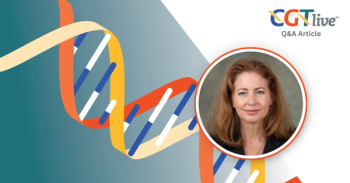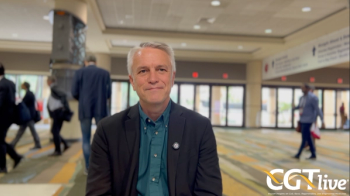
Regeneron’s Future Plans for Its AAV Targeting Approach
Sven Moller-Tank, PhD, a senior director at Regeneron, also discussed his thoughts on trends in the gene therapy field in general.
This is the second part of an interview with Sven Moller-Tank, PhD. For the first part,
In an interview with CGTLive® at
Moller-Tank pointed out that the company has pushed forward its unique approach to adeno-associated virus (AAV) targeting in the context of skeletal muscle, the central nervous system (CNS), and the peripheral nervous system, but that it plans to eventually expand beyond those areas. In addition, he spoke about his thoughts on current trends in the field of gene therapy in general.
CGTLive: Are there any future plans for Regeneron that you can discuss?
Sven Moller-Tank, PhD: My primary interest is in the targeting component. We're doing a lot of cool stuff outside of that, but I'm going to focus on the targeting. We're continuing to advance our platforms for targeting, again, the skeletal muscle, the CNS, and the peripheral nervous system, and we want to push that to a state where they're ready to go into the clinic. But also we're interested in targeting other tissues. Our entry point was muscle and CNS. We recently expanded to the peripheral nervous system, and we want to expand beyond that, where there are plenty of additional therapeutic opportunities.
Is there anything you want to add about Regeneron's work?
The only other thing is that we're really interested in combining the targeting that we've been developing for AAV, with all sorts of other modalities. So again, siRNA, lipid nanoparticles, these sorts of things. We've had initial success with our AAV, and we think there are great opportunities applying it to other modalities.
Taking a broader view, are there any trends in the industry and/or at ASGCT this year that you are paying close attention to?
Overall, the field in general has realized that gene therapy is extremely challenging and that a lot of the very early promise has been more difficult to deliver on than perhaps we had initially envisioned. But there's a lot of great work that's being done to address the current challenges. In particular, something that we've always emphasized is the need to detarget from the liver. I think the field in general has realized that that's important because of the toxicities associated with delivery to the liver or the peripheral nervous system. You see more and more that companies, especially in their capsid engineering efforts, are emphasizing more and more that this detargeting is an essential component of developing their next generation capsids.
This transcript has been edited for clarity.
Newsletter
Stay at the forefront of cutting-edge science with CGT—your direct line to expert insights, breakthrough data, and real-time coverage of the latest advancements in cell and gene therapy.


















































